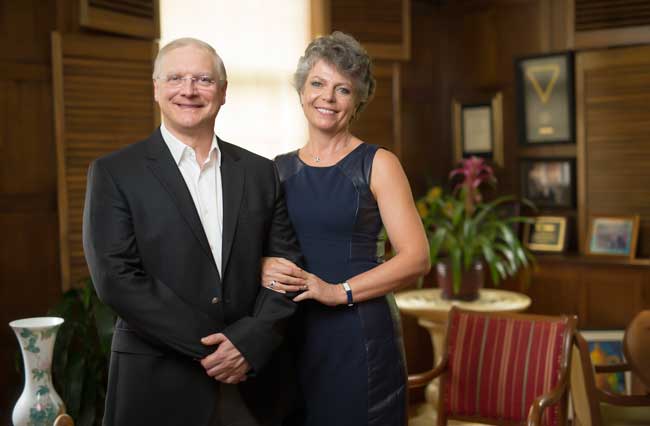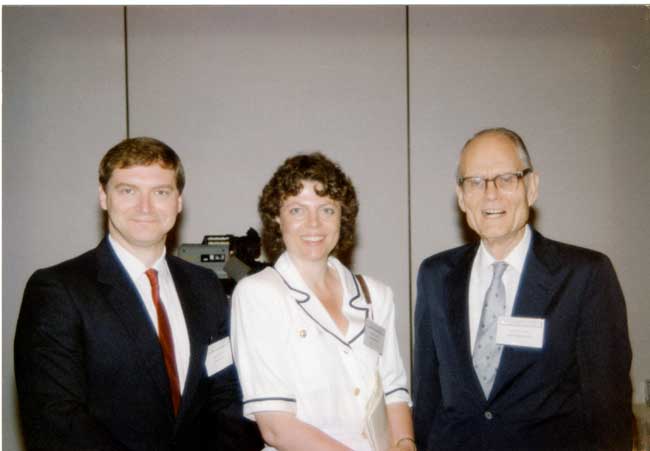
Imagine a sky full of stars. Each gleaming light represents a bright young student. Now imagine one shines a bit brighter than the rest. What will become of this gifted child, who could be the next Albert Einstein, Marie Curie or W.E.B. Du Bois?
A half-century ago, schools offered few choices for academically gifted students. Some were given the option of skipping a grade or graduating early, but educators had concerns about the impact such practices would have on social-emotional development. Few enrichment programs or curricula were designed for those who far exceeded their peers.
One of the tipping points for gifted education took place in 1971 at Johns Hopkins University when renowned psychologist Julian C. Stanley launched the Study of Mathematically Precocious Youth (SMPY). Curious to understand the potential of the intellectually gifted, Stanley began hosting talent searches and administering the SAT college entrance exam to middle-schoolers, an unheard-of practice at the time.
In 1976, Camilla Benbow, a senior in Stanley’s psychological testing class, was intrigued with his research, and began helping manage the talent searches. She stayed on as a graduate student, assisting in conducting surveys, gathering data, administering tests, tabulating test scores and tracking the students’ responses to various educational interventions.
“We didn’t know at the time how long the study would go. There was no master plan. It was just an exciting time because we were going into unknown territory,” said Benbow, Patricia and Rodes Hart Dean of Education and Human Development at Peabody. “We were trying different ways to test, looking at specific abilities, and then finding ways to educate and challenge these students. We were constantly surprised at how capable these kids were and how quickly they could learn.”
Plotting a Course for the Future

When Stanley approached retirement, he turned over the research reins of SMPY to Benbow, who had the distinction of being his final graduate student.
Stanley had planned for the study to follow up with the SMPY participants after high school, and maybe once more. But Benbow was eager to carry on and assess the effects of the experiment for a much longer period of time. When she shared that she wanted to conduct a 50-year study, tracking the precocious teens through their careers and into retirement, Stanley wholeheartedly supported her vision. But a few colleagues raised a quizzical brow.
“They kind of laughed, as if to say, ‘Oh, to be young and have these wild ideas,’” Benbow said. “But Julian told me, ‘You’re young enough, you should do it.’ It was a big break for me, and so I went for it.”
In 1985, Benbow moved SMPY to Iowa State University, where she was brought on as associate professor in the psychology department. Across the plains in Urbana-Champaign, University of Illinois post-doctoral fellow David Lubinski was also studying the path of the gifted child. He was conducting research with renowned differential psychologist and methodologist Lloyd Humphreys, whose research focused on the longitudinal data from landmark study Project TALENT. Lubinski was familiar with SMPY, and when a faculty position opened up at Iowa State, Lubinski inquired, hoping to become part of Benbow’s team.
“They needed someone with a background in counseling psychology, and I had that, even though what I really wanted to do was work with Camilla,” Lubinski said.
“The search committee got her involved in the interview process, and we just hit it off. When we had our first phone conversation, we talked for two hours.”
The researchers met in person for the first time on Valentine’s Day in 1990. Their meeting would prove fruitful, and the day prophetic. Lubinski got the job and began co-directing SMPY with Benbow the following year. Eight years after that Valentine’s Day meeting, the two married.
“I stumbled into this amazing opportunity, and then David came, and we have been a great team bringing different strengths to it all these years,” Benbow said. “It’s been a remarkable journey and confluence of opportunity.”
“Camilla and I have always been of one mind that we need to nurture this precious resource,” Lubinski said. “In the future, these gifted children could find solutions to cancer, autism and mental illness. They will write novels and create technologies that will be transformative. We must support them, because one day they will be among the forefront of those changing the world.”
SMPY Grows Up
SMPY, housed at Peabody since 1998, is in its fifth decade. It is includes five cohorts totaling more than 5,000 participants, most now at middle age. The study has expanded over the years to include the tracking of spatial and verbal abilities in addition to mathematical reasoning.
The light it has shed on the precocious child’s challenges and triumphs has opened doors for massive improvements in gifted education. Some of the earliest study results punctuated the lack of support for gifted students, who reported they had been without meaningful challenges in the classroom.
“When we started, there were few students taking the SAT in middle school, and now there are thousands,” Benbow said. “There were few taking the Advanced Placement exams, fast-paced or weekend classes, or taking college courses in high school, and now there are hundreds of thousands.”
She added that there are now tens of thousands of gifted children enrolled in accelerated summer programs annually, and the early identification and nurturing of giftedness has extended to the elementary school level.
“It has been so rewarding to see the opportunities for gifted children grow over the years—we could not have imagined it,” Benbow said.
Benbow and Lubinski’s midlife check-in of two of the first SMPY cohorts (now ages 48–53) delivered some surprising results in Psychological Science in 2014. The study focused on career choices, mate selection, salaries, hours of work and life satisfaction. Both males and females participants, not surprisingly, had achieved successful careers in business, health care, technology, engineering, education and other fields. Male and female alike reported a high level of satisfaction with their life’s choices. But surprising differences emerged along the gender line.
Most of the women had chosen to invest in a broad range of interests in addition to career. They spent more time on extended family, children and community involvement than the men, who for the most part chose to invest more hours on their careers.
“We were not expecting these gender differences,” Benbow said. “But it has been fascinating to see that there are multiple ways to construct a meaningful life. Some may be more focused on knowledge creation and innovation, others are driven to keeping families and communities healthy and vibrant—fostering social well-being. The important thing is that people have equal opportunities to develop and contribute how they wish.”
What’s Next for SMPY
For the next round of investigation, Benbow and Lubinski will embark on another midlife check-in, focusing this time on two younger cohorts, whose members turn 50 this year.
The first is Cohort 3, which consists of 500 of the most profoundly talented SMPY participants. The second is Cohort 5, which includes about 700 people who were identified and psychologically assessed in 1992 when they were first- and second-year graduate students in premier STEM (science, technology, engineering and math) programs. Funded by the Templeton Foundation, the survey launches next year with preliminary data expected in 2018.
“I think it’s important to note that gifted people are exceptional, but they are not categorical types,” Lubinski said. “A person can test high in spatial reasoning and low on verbal. Or high in verbal and lower on mathematical. What’s so fascinating about this study is that each person has a different and unique combination of talents. It’s like looking at the night sky—it’s a constellation of talents.”
In a few years, as the cohorts begin reaching retirement age, Benbow and Lubinski will conduct final surveys of the participants who were identified as gifted so long ago.
“When their careers are over, what will they say? What are they most proud of? Will they have regrets?” Benbow said. “How will they use their empty nest years or the final years of their professional lives? What are their plans for the next season of life? I want to see how the story ends.”
Learn more about the SMPY midlife check-in at vu.edu/smpy-midlife.